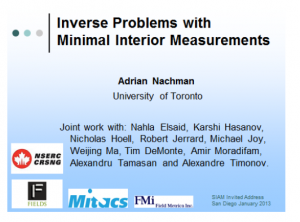Three of our faculty members have been invited to speak at the 2018 International Congress of Mathematics (ICM) in Rio de Janiero, Brazil:
* Konstantin Khanin will speak in the research area of Dynamical Systems and ODEs joint with Mathematical Physics
* Benjamin Rossman will speak in the research area of Mathematical Aspects of Computer Science
* Jacob Tsimerman will speak in the research area of Number Theory.
The conference will be held August 1-9, 2018. More info on the event can be found here.
For a full list of speakers to the event, see here.
